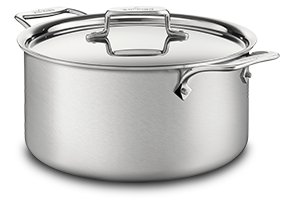
This image has format transparent PNG with resolution 283x198.
You can download this image in best resolution from this page and use it for design and web design.
Cooking pot PNG with transparent background you can download for free, just click on download button.
Cookware and bakeware are food preparation vessels used in kitchens. Cookware is used on a stove or range cooktop, while bakeware is used in an oven. Some utensils are considered both cookware and bakeware.
There is a great variety of cookware and bakeware in shape, material, and inside surface. Some materials conduct heat well; some retain heat well. Some surfaces are non-stick; some require seasoning.
Some pots and their lids have handles or knobs made of low thermal conductance materials such as bakelite, plastic or wood, which make them easy to pick up without oven gloves.
A good cooking pot design has an "overcook edge" which is what the lid lies on. The lid has a dripping edge that prevents condensation fluid from dripping off when handling the lid (taking it off and holding it 45°) or putting it down.
Metal pots are made from a narrow range of metals because pots and pans need to conduct heat well, but also need to be chemically unreactive so that they do not alter the flavor of the food. Most materials that are conductive enough to heat evenly are too reactive to use in food preparation. In some cases (copper pots, for example), a pot may be made out of a more reactive metal, and then tinned or clad with another.
Aluminium is a lightweight metal with very good thermal conductivity. It is resistant to many forms of corrosion. Aluminium is commonly available in sheet, cast, or anodized forms, and may be physically combined with other metals (see below).
Sheet aluminium is spun or stamped into form. Due to the softness of the metal, it may be alloyed with magnesium, copper, or bronze to increase its strength. Sheet aluminium is commonly used for baking sheets, pie plates, and cake or muffin pans. Deep or shallow pots may be formed from sheet aluminium.
Cast aluminium can produce a thicker product than sheet aluminium, and is appropriate for irregular shapes and thicknesses. Due to the microscopic pores caused by the casting process, cast aluminium has a lower thermal conductivity than sheet aluminium. It is also more expensive. Accordingly, cast aluminium cookware has become less common. It is used, for example, to make Dutch ovens lightweight and bundt pans heavy duty, and used in ladles and handles and woks to keep the sides at a lower temperature than the center.
Anodized aluminium has had the naturally occurring layer of aluminium oxide thickened by an electrolytic process to create a surface that is hard and non-reactive. It is used for sauté pans, stockpots, roasters, and Dutch ovens.
On this page you can download free PNG images: Cooking pot PNG images